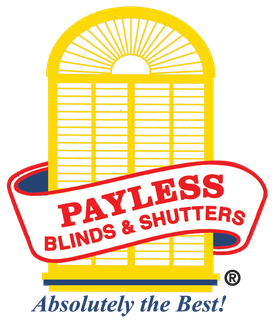Ultimate Guide to Basswood and Faux Wood Plantation Blinds for Home Decor
Introduction
Plantation blinds are a popular choice for homeowners seeking to combine style, functionality, and durability. Basswood and faux wood plantation blinds each offer unique benefits that can enhance the look and feel of your home. This comprehensive guide will explore the differences, advantages, and considerations for choosing between basswood and faux wood plantation blinds.
Why Choose Plantation Blinds?
Plantation blinds, also known as plantation shutters, are characterized by their wide louvers and elegant design. They offer excellent light control, privacy, and insulation, making them a versatile window treatment option. Whether you prefer the natural beauty of basswood or the durability of faux wood, plantation blinds can complement various decor styles and improve the overall aesthetics of your home.
Basswood Plantation Blinds
Natural Beauty and Lightweight Design
Material Characteristics
- Natural Aesthetics: Basswood is a type of hardwood known for its fine, uniform texture and smooth finish. It has a natural, warm appearance that adds a touch of elegance to any room.
- Lightweight: Basswood is lighter than many other hardwoods, making it easier to install and operate, especially for larger window treatments (The Home Depot).
Advantages
- Customizability: Basswood blinds can be easily customized with various stains, paints, and finishes to match your interior decor. They can be tailored to fit any window size and shape, including specialty shapes like arches and angles (Window Digest).
- Durability: Despite being lightweight, basswood is a durable material that resists warping and bowing, making it suitable for long-term use.
- Insulation: Basswood provides excellent insulation, helping to regulate indoor temperatures and reduce energy costs.
Considerations
- Cost: Basswood blinds are generally more expensive than faux wood options due to the quality and craftsmanship involved.
- Maintenance: While basswood is durable, it requires regular maintenance to preserve its natural beauty. This includes dusting and occasional refinishing to prevent damage from UV exposure and moisture.
Faux Wood Plantation Blinds
Durability and Moisture Resistance
Material Characteristics
- Synthetic Composition: Faux wood blinds are made from PVC, vinyl, or composite materials designed to mimic the appearance of real wood. They offer a similar aesthetic without the same level of maintenance (The Home Depot).
- Heavier Weight: Faux wood is typically heavier than basswood, which can be a consideration for larger window treatments (Norman® USA).
Advantages
- Cost-Effective: Faux wood blinds are often more affordable than basswood, making them a budget-friendly option for homeowners who want the look of wood without the high price tag.
- Moisture Resistance: Faux wood is highly resistant to moisture, making it an ideal choice for high-humidity areas such as bathrooms, kitchens, and laundry rooms (Norman® USA).
- Low Maintenance: These blinds are easy to clean and maintain. They can be wiped down with a damp cloth, and they do not require refinishing or special treatments to maintain their appearance.
Considerations
- Weight: The heavier weight of faux wood can make them harder to install and operate, especially on larger windows.
- Aesthetic Differences: While faux wood closely mimics the look of real wood, it may lack the depth and natural variation in grain that comes with genuine basswood.
Comparing Basswood and Faux Wood Plantation Blinds
Cost and Budget
- Basswood: Higher initial cost but offers a premium, authentic wood look and long-term value.
- Faux Wood: More affordable upfront, with lower maintenance costs over time.
Installation and Operation
- Basswood: Lightweight and easier to install, suitable for larger windows.
- Faux Wood: Heavier, which can be challenging for large installations but provides excellent durability.
Environmental Considerations
- Basswood: A renewable resource when sourced from sustainable forestry practices. It’s biodegradable and has a lower environmental impact compared to synthetic materials.
- Faux Wood: Made from non-renewable materials like PVC and vinyl. While it’s durable and long-lasting, it has a higher environmental impact due to the production and disposal processes (Blinds.com) (Blinds Chalet).
Tips for Choosing the Right Plantation Blinds
- Assess Your Needs: Consider the specific needs of each room, such as moisture levels, desired light control, and aesthetic preferences.
- Measure Accurately: Ensure precise measurements for a perfect fit, especially if ordering custom blinds.
- Consider Long-Term Costs: Factor in maintenance and potential replacement costs when deciding between basswood and faux wood.
- Match Your Decor: Choose finishes and colors that complement your existing interior design for a cohesive look.
Conclusion
Basswood and faux wood plantation blinds each offer unique benefits that can enhance your home decor. By understanding the characteristics, advantages, and considerations of each material, you can make an informed decision that suits your style, budget, and practical needs. Whether you opt for the natural beauty of basswood or the durability and low maintenance of faux wood, plantation blinds are a versatile and stylish addition to any home.
For further information and to explore a wide range of options, visit reputable providers like Blinds.com, The Home Depot, and Norman USA.
This guide is designed to provide you with comprehensive information on basswood and faux wood plantation blinds, ensuring your home decor is both stylish and practical.
“Testimonials”
Forms of Payment Accepted
We accept Cash, Check, Debit Cards and Credit Cards.

